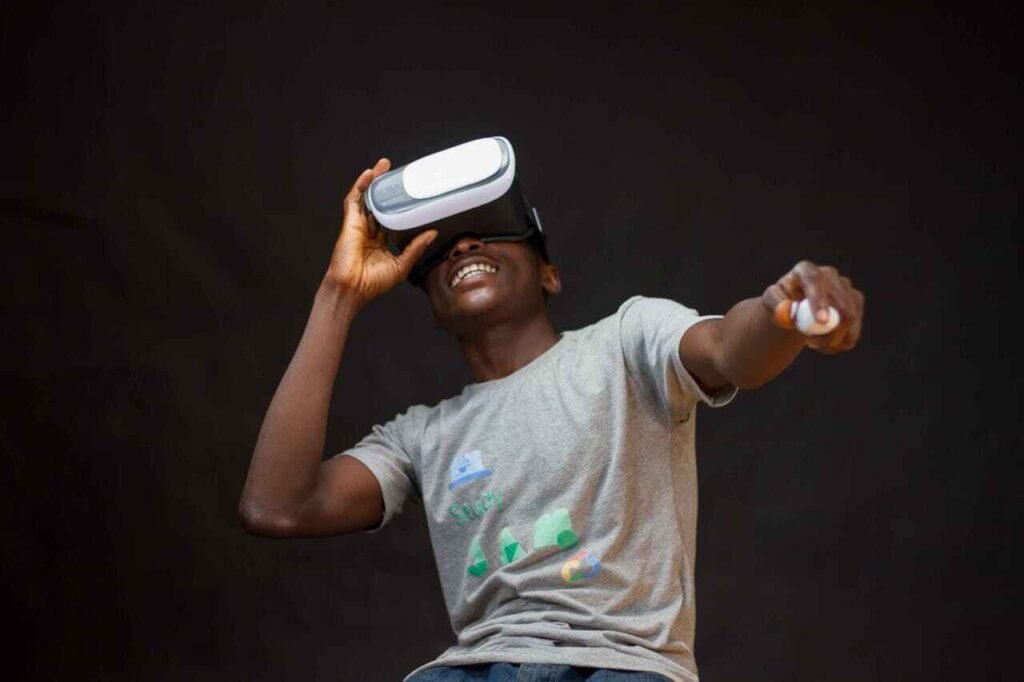Augmented Reality glasses are taking over such great influence in technology. These cool devices overlay digital information onto the real world; therefore, users have an improved view of their surroundings. As AR technology continues to evolve, AR glasses are bound to revolutionize various industries and even change how humans interact with technology.
How AR Glasses Work
Several critical components work together to enable the functionality of the AR glass: sensors, cameras, and displays. Sensors track the movement of both the user and everything around them, while cameras take pictures of the real world. Displays then overlay digital information on it to create an augmented reality that seamlessly integrates the real and virtual worlds.
One of the most critical technologies in AR glass involves the use of advanced optics. This is necessary to ensure that the digital information is projected clearly and accurately without a headache or discomfort to the user. Additionally, most of these AR glasses employ speech recognition and gesture control to interact with users in hands-free operations.
Real-World Applications of AR Glasses
Practical applications of AR glass is very wide across a wide array of industries. Within industry, they are intended for use in maintenance and training. For example, technicians working on complex machinery can wear AR glasses to allow for easy access to information and instructions in real-time, hence raising efficiency and reducing the possibility of errors.
AR Glass in Health Sector
It will revolutionize the health sector by changing surgery and diagnostics using AR glasses. The surgeons will have critical patient data and 3D models in their field of view during operations for more accurate surgical procedures, which reduces complication rates. Similarly, this kind of AR glasses will help in diagnosis by overlaying medical images onto the body of the patient and therefore providing much more detail to the doctor.
AR Glass in Education
Another area where AR glasses are making quite an impact is in education. AR glasses create interactive learning environments that facilitate much better comprehension of tough concepts in students. For example, walking them around the 3D model of some historical landmark or perhaps conducting science experiments virtually could provide some effectiveness to learning.
AR Glass in Retail
AR glasses introduce new shopping experiences to retail. Customers can use AR glasses for virtual garment fittings, accessories, and even makeup. This helps customers make better purchase decisions. The basis for this may be in the fact that augmented reality enhances customer experience on one hand, and reduces the number of returns and exchanges on the other.

Benefits to AR Glasses
Various and great are the benefits brought by AR glasses. One of the greatest advantages is the productivity and efficiency that they have brought forward. For instance, AR glasses promote real-time information and instructions, thus allowing users to cut down on time and increase the precision with which they can finish certain tasks. This is extremely useful in industries like manufacturing, health care, and logistics.
Additionally, AR glasses enhance user experiences by creating an environment that is more immersive and interactive. Be it exploring a virtual museum exhibit or participating in remote training, AR glasses make these experiences far more engaging and enjoyable, which may lead to higher levels of user satisfaction and retention.
Another key benefit of the use of AR glasses pertains to the potential for increased accessibility and inclusivity. As an example, the AR glasses can have real-time subtitles for the hearing impaired or do live translation of the foreign languages that are spoken by travelers. The technology will be more useable by and with a wider array of persons, thereby making it even more inclusive and diverse.
Operational Challenges towards Adoption of AR Glasses
Despite their many beneficial uses, there are a number of challenges with AR glasses that must be overcome if wide-scale adoption is going to be realized. First and foremost among these is cost and affordability. High-quality AR glasses are very expensive, putting them out of the reach of many consumers and business ventures. Now that the technology is still in development, an important way to make it more affordable is needed.
Another important issue is that of design and comfort. For people to wear AR glass for an extended period, they must be lightweight and comfortable. Designers have to pay attention to all factors that provide good weight distribution, fit, and materials. The design should also be appealing enough to make users want to put it on.
A very critical challenge arises concerning privacy and ethical considerations. The AR glass will have a great capability for data collection concerning users and the environment in which they exist. Here, security concerning data privacy has to be considered, coupled with the misusing issue thereof. In this direction, clear guidelines and regulations need to be laid down so as to address this challenge and responsibilities thereby arise in making use of AR glasses.

AR Glasses: The Future Ahead
The future of AR glasses looks bright and is going to be driven by several trends and technologies that are emerging. Most exciting will be the integration of AR glasses into other advanced technologies such as artificial intelligence and machine learning due to enhanced capabilities.
Another important trend to note is the further development of advanced technologies for displays, entailing higher resolution, increased brightness, and even color accuracy, apart from developing new types of displays, such as micro-LEDs. This will make AR glasses more appealing visually and comfortable for use.
But this also means that the chances for mainstream adoption of AR glasses are on the increase. As access improves and the technology gets more affordable, it is likely to be adopted across industries and consumers. This could be the significant turn of events in the terms of how we interact with technology and the world outside.
Long-term, AR glass may be a huge societal transformation. They may change everything from how we work, learn, or even communicate; they would come with opportunities but at the same time, challenges. Since AR technology is an ever-continuing learning process, immense concern should be expressed for its ethical and social considerations and their use for the benefit of all citizens in society.
Final Words
Undoubtedly, AR glasses will be the next big thing in tech and are bound to revolutionize a number of industries, changing how we will interact with technology in the future. The immediate benefit varies right from productivity enhancement through better accessibility. However, several challenges must be addressed for wide-scale adoption: cost, design concerns, and privacy issues.
What will continue to drive their evolution in the future is further development of the AR glass and integration with other developed technologies. In a point of view, from mainstream adoption to making great changes in society, AR glasses are going to be at the core of developing the future of technology. In this, embracing innovative technology and addressing the challenges associated would bring about its complete utilization in creating a more connected and inclusive world.











